Integration of exogenous input into a dynamic salience map revealed by perturbing attention
- PMID: 16957080
- PMCID: PMC6674497
- DOI: 10.1523/JNEUROSCI.1898-06.2006
Integration of exogenous input into a dynamic salience map revealed by perturbing attention
Abstract
Although it is widely accepted that exogenous and voluntary factors jointly determine the locus of attention, the rules governing the integration of these factors are poorly understood. We investigated neural responses in the lateral intraparietal area (LIP) to transient, distracting visual perturbations presented during task performance. Monkeys performed a covert search task in which they discriminated the orientation of a target embedded among distractors, and brief visual perturbations were presented at various moments and locations during task performance. LIP neurons responded to perturbations consisting of the appearance of new objects, as well as to abrupt changes in the color, luminance, or position of existing objects. The LIP response correlated with the bottom-up behavioral effects of different perturbation types. In addition, neurons showed two types of top-down modulations. One modulation was a context-specific multiplicative gain that affected perturbation, target, and distractor activity in a spatially nonspecific manner. Gain was higher in blocks of trials in which perturbations directly marked target location than in blocks in which they invariably appeared opposite the target, thus encoding a behavioral context defined by the statistical contingency between target and perturbation location. A second modulation reflected local competitive interactions with search-related activity, resulting in the converse effect: weaker perturbation-evoked responses if perturbations appeared at the location of the target than if they appeared opposite the target. Thus, LIP encodes an abstract dimension of salience, which is shaped by local and global top-down mechanisms. These interacting mechanisms regulate responsiveness to external input as a function of behavioral context and momentary task demands.
Figures
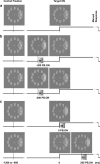

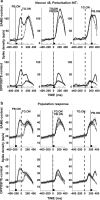
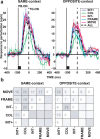
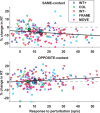
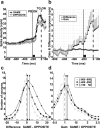


Comment in
-
Searching for an oddball: neural correlates of singleton detection mode in parietal cortex.J Neurosci. 2006 Dec 6;26(49):12631-2. doi: 10.1523/jneurosci.4379-06.2006. J Neurosci. 2006. PMID: 17152680 Free PMC article. Review. No abstract available.
References
-
- Barash S, Bracewell RM, Fogassi L, Gnadt JW, Andersen RA. Saccade-related activity in the lateral intraparietal area. I. Temporal properties. J Neurophysiol. 1991;66:1095–1108. - PubMed
-
- Bisley JW, Goldberg ME. Neuronal activity in the lateral intraparietal area and spatial attention. Science. 2003;299:81–86. - PubMed
-
- Bowman EM, Brown VJ, Kertzman C, Schwarz U, Robinson DL. Covert orienting of attention in macaques. I. Effects of behavioral context. J Neurophysiol. 1993;70:431–443. - PubMed
-
- Chastain G, Cheal M. Attentional capture with various distractor and target types. Percept Psychophys. 2001;63:979–990. - PubMed
Publication types
MeSH terms
Grants and funding
LinkOut - more resources
Full Text Sources
Other Literature Sources
